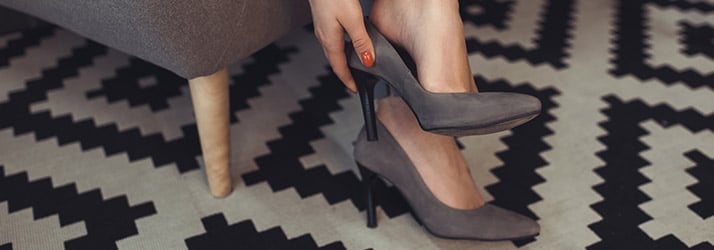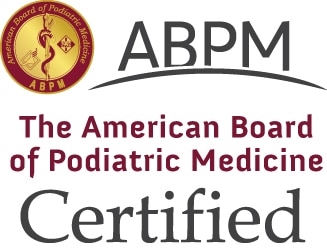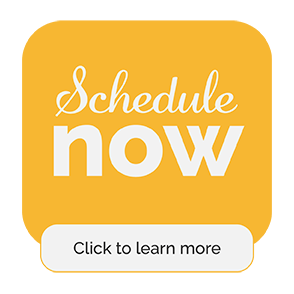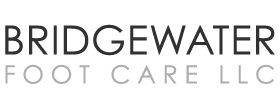Heel Pain in Raritan

When your heel starts hurting, it can affect your everyday activities. What may start small can grow worse with time. So how do you figure out what's causing your heel pain in Raritan, and how do you know if you need to seek our medical attention at Bridgewater Foot Care LLC?
Some Everyday Causes of Heel Pain in Raritan
While your heel pain may be caused by a serious condition in need of treatment, let's first look at some average causes of heel pain.
Your footwear is the first possible cause you should take into consideration. How well do your shoes fit? And are they meant to be comfortable? Even if you've been wearing high-heeled shoes for years, it's possible that over time, your feet have gotten tired of it and are no longer well-suited to the pain caused by regularly wearing high-heeled shoes.
How much time do you spend on your feet? Prolonged periods on your feet can cause heel pain.
Did you recently overexert? Meaning, did you go for a longer hike than your feet are used to?
Did you stand up in one position longer than normal? You may not think of it, but if you were used to sitting at a desk and switched to a standing desk for eight hours, it may be putting more pressure on your feet than you're used to.
What to Do When You Think Your Heel Pain is Okay
Your heel hurts and you're pretty sure that it's because you went on a long walk the other day. Realizing this, you decide to take some at-home treatment options. That's good and fine, and we'll go over some options for doing this in the next paragraph, but if the pain continues for three days or grows worse, make sure to check in with your podiatrist at Bridgewater Foot Care LLC as these could be signs of bigger issues. Remember that it's entirely possible you tore a ligament or sprained something while you were on that long walk and the issue is more than just overuse.
Resting is the first step to at-home treatments for heel pain. Avoid running. Don't stand for too long and sit whenever you can. Don't walk on hard surfaces.
Also, make sure you are wearing comfortable shoes. If you're experiencing heel pain, avoid being barefoot. You want some extra cushion while you're healing.
You can purchase heel cups at the pharmacy to wear in your shoes for some extra padding.
Ice your feet for fifteen to twenty minutes twice a day. This will help deal with any inflammation in the heel.
Other Causes of Heel Pain
There are many other causes of heel pain. If you've been experiencing heel pain for more than a few days, you need to schedule an appointment with a Raritan podiatrist to get checked out.
Heel pain may be worse after you've walked on the heel for a long time. However, it's also very common to have a serious problem with heel pain that you only feel after resting. You get up, put weight on your feet, and the heel hurts. It feels better once you walk it off, which stretches the foot. This is still something serious that you want to get looked into, even though it seems to "go away on its own". In this case, the pain will likely grow worse over time.
One of the most common causes of heel pain that goes away after you've walked on your foot for a while is plantar fasciitis. Stretching from your heel to your toe is a ligament called the plantar fascia. When this ligament is damaged or inflamed, it causes pain. This is the condition known as plantar fasciitis.
Your podiatrist at Bridgewater Foot Care LLC will be able to diagnose your heel pain and then provide a custom treatment plan to keep your feet in good health. If you've been experiencing pain in the heel, don't wait to schedule an appointment. There's no need to live in pain or risk the condition growing worse. Contact our team today if you have any questions about your foot health.
OFFICE HOURS
Monday
9:00am - 5:00pm
Tuesday
Closed
Wednesday
Closed
Thursday
9:00am - 5:00pm
Friday
9:00am - 5:00pm
Saturday
By Appointment Only
Bridgewater Foot Care LLC
575 NJ-28 #2107
Raritan, NJ 08869
Our office is located on Building 2, South Entrance, next to Somerset Pediatric Group





